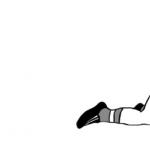Competent organization of construction work is impossible without drawing up correct design documentation. All documents are drawn up in accordance with approved rules and regulations. The purpose of drawing up documentation is to improve technical culture, introduce new construction technologies, reduce costs for building materials and increase work safety.
When developing, the following projects must be drawn up:
- traffic organization (TMO);
- construction organizations (POS);
- production of work (PPR).
These documents help ensure the safety of employees when working on a construction site, improve the organization of the work process, increase labor productivity and the quality of results. With the high standards required for construction work these days, technological solutions and technical equipment must be worked out especially carefully before any work begins. For this reason, special attention at the preparatory stage should be paid to the PPR document.
What is PPR?
The work project includes: technological rules, requirements for labor protection and environmental protection. The PPR serves as the basis for compiling a list of necessary resources and materials, regulates the organization of work activities, and allows one to determine the timing and risks of future construction.
How is the PPR developed?
Who draws up the work project?
The general contracting construction and installation company is responsible for drawing up the PPR for the construction of a new or reconstruction of an old building. A third-party design organization can undertake the preparation of the document if an order is placed with it.
In some cases, when the volume of work being carried out is very large, the PPR may not be developed for the entire facility, but, for example, only for the installation of scaffolding, roofing, etc. Before the introduction of SNiP 3.01.01-85, such documents could not bear the name of a work organization project. Now they are called PPR, but it is always specified that the project was drawn up for specific work. If roofing installation or other special work is performed by third-party companies, they also develop PPR.
What is needed to develop a PPR?
- A task for a design organization drawn up by the customer. It is imperative to indicate the time frame within which the project must be completed.
- The assignment must be accompanied by a PIC and all required working documentation.
- Information on the supply of materials and equipment, the use of construction equipment, personnel.
- Data on technical research of operating enterprises, buildings and structures. Requirements for construction work in existing production conditions.
- Special construction conditions - low temperatures, groundwater levels, high humidity, etc.
The most significant document in the PPR is the calendar plan. The correctness of its preparation plays a big role. The success of the project as a whole largely depends on this document. The schedule lists the sequence of construction work and the time frame within which it must be completed.
Another significant document as part of the PPR is the master plan, which for brevity is called the construction plan. Its goal is to reduce construction site preparation costs, as well as provide builders with safe working conditions.
The technological map is another important document included in the PPR. Contains information about the most productive ways to perform work and their sequence. This is also where labor costs are calculated, resources are determined, and the labor organization process is planned. The technological map may also include a breakdown of the facility into sections indicating workplaces. All technological maps are divided:
- to standard ones, tied to an object;
- to standard ones, not tied to an object;
- to atypical ones, tied to an object.
The last significant document in the PPR is an explanatory note, which includes labor protection measures, calculation of the complexity of construction work and the need for additional warehouse and utility structures. The explanatory note also contains information about the economic and technical components of construction.
Who approves the project?
- Contractor's Guide.
- Representative of technical supervision.
- Chief engineer or other customer representative.
Consequences of violating the regulations
Violation of project documentation, norms and standards entails serious consequences:
- administrative fine for citizens - up to 1000 rubles;
- for officials - up to 10,000 rubles;
- for entrepreneurs who are not a legal entity - up to 10,000 rubles (suspension of activities for a period of up to 90 days is also possible);
- for legal entities - up to 100,000 rubles (or suspension of activities for a period of up to 90 days).
If the work affected elements related to the reliability of buildings and utility networks, an administrative fine will be imposed:
- for citizens - up to 5,000 rubles;
- for officials - up to 50,000 rubles;
- for entrepreneurs who are not a legal entity - up to 50,000 rubles (or suspension of activities for up to 90 days);
- for legal entities - up to 500,000 rubles (or suspension of activities for up to 90 days).
The PPR is a further development of the main decisions taken in the PIC. PPR is developed to determine the most effective methods for performing construction and installation work, reducing cost and labor intensity, reducing construction duration, increasing the degree of use of construction machinery and equipment, and improving the quality of construction and installation work. Construction without PPR is prohibited.
The work project is developed by a construction and installation organization or a specialized one designed to provide technical assistance and introduce new technologies.
PIC and PPR should be based on progressive engineering solutions, taking into account the current level of industrialization of construction production, new methods and forms of its organization. The nomenclature and volume of design documentation, as well as the degree of its detail, are determined by the nature of the facility under construction and the complexity of specific conditions.
A work production project is a documented model of construction processes for the construction of facilities from the beginning of preparatory construction and installation work to the commissioning of facilities. The types and volumes of construction and installation work for each facility, the sequence and timing of their implementation, the need and timing of receipt of all types of material and technical resources, construction machines, and workers at the construction site are determined, and rational technology and safe conditions for performing the work are also provided.
The approved PPR is the basis for operational planning, control, regulation and accounting of construction production. PPRs are developed with the aim of regulating the implementation of construction and installation works using the most effective methods with the study of optimal compositions of teams of workers, sets of construction mechanisms and manual machines, ensuring a reduction in construction duration, reduction in labor intensity, cost and improvement in the quality of construction and installation works.
Source documents for the development of the PPR: assignment for the development of the PPR, PIC; working documentation for the construction of the facility; estimate for the construction of the facility and summary construction estimate; initial data on the availability and capacity of construction production base enterprises, the capacity and workload of existing construction and installation general contracting and subcontracting organizations and their staffing levels, the composition of the fleet of construction machines, vehicles and other types of transport; information on the procedure and timing of delivery of technological, energy, plumbing and other equipment and special materials by the customer; data on the supply of building structures, products, materials; other information necessary for the development of project documentation for construction and installation works.
The PPR should provide for the introduction of rational methods, best practices and scientific and technical achievements in the field of construction production.
The decisions made in the PPR should ensure: reduction in the labor intensity of work due to comprehensive mechanization and hand-held machines; reducing the duration of construction due to the maximum time combination of general construction and specialized work and reducing the duration of each work; increasing worker productivity through the introduction of advanced methods of workplace organization; reducing the cost of construction and installation work; compliance with labor protection, safety regulations, industrial sanitation and fire safety.
PPR are developed on:
- construction of a building, structure or part thereof (unit);
- Certain types of work that are difficult to perform;
- preparatory period of construction.
The PPR for the construction of a building, structure or part (assembly) thereof includes the following documents:
- a calendar plan for the production of work on an object or a calendar network schedule - the sequence and timing of work are established, the need for labor resources and mechanization is determined;
- construction master plan - graphically determines the placement of construction facilities on a construction site, linked to the location of buildings, structures, networks and communications under construction;
- schedules for the arrival of building structures, products, materials and equipment at the site;
- schedules for the movement of workers around the site and main construction machines;
- technological maps (schemes) for performing certain types of work;
- decisions on the production of geodetic works - the layout of signs for carrying out geodetic constructions and measurements is determined, as well as the necessary accuracy and technical means of geodetic control of construction and installation work;
- safety solutions;
- measures to perform work using the method of end-to-end in-line brigade contracting;
- measures to perform (if necessary) work on a rotational basis;
- solutions for laying temporary networks of water, heat and power supply and lighting.
- construction site and workplaces;
- lists of technological equipment and installation equipment;
- explanatory note: justification for decisions on work; the need for energy resources and solutions to cover it;
- a list of mobile (inventory) buildings and structures with calculation of needs and justification of the conditions for linking them to sections of the construction site;
- measures to ensure the safety of materials, products and structures; measures to protect existing buildings and structures from damage, environmental protection measures, technical and economic indicators.
The PPR for the implementation of certain types of work should consist of a work schedule, a construction master plan, a technological map and a brief explanatory note with the necessary justification and technical and economic indicators.
The PPR for the preparatory construction period should contain:
- work schedule for an object or type of work;
- construction master plan;
- technological maps;
- movement schedules of workers and main construction machines;
- schedule for receipt of building structures, basic materials and equipment required for this period for construction;
- diagrams of placement of signs for performing geodetic constructions, measurements, as well as instructions on the required accuracy and technical means of geodetic control;
- explanatory note.
In PPR, as a rule, standard design developments for the production of construction and installation works, standard technological maps and diagrams for the production of certain types of work, maps of labor processes, standard drawings of mechanized installations, small-scale mechanization equipment and inventory devices are used. For certain types of work, in the absence of standard solutions, it is allowed to develop individual diagrams, drawings, and technological maps.
The quality of the developed PPRs is checked by comparing them with reference PPRs for similar objects in terms of technical and economic indicators.
PIC and PPR in construction - this O the most basic documents, without which activities at a particular facility cannot be started.
The construction organization project and the work execution project are one of the most important documents that are necessary to begin construction work at the site.
What is POS
This document is developed immediately for the entire construction and provides for all stages of production and their clearly established deadlines.
This document describes the calendar plan of actions, all automated resources that are necessary for installation work, financial costs, technical support and distribution of labor, depending on the number of specialists, the scope of the project and the construction period.
To develop a construction organization project, you will need information about the facility, on the basis of which documentation is drawn up. Development of POS in construction This is done by companies that provide construction services, including ours.
As a rule, a construction organization plan includes the following sections:
- calendar plan for construction and installation work;
- construction conditions;
- explanatory note;
- general plan;
- documentation of communication support.
Depending on the nature of the object, the document may contain other clauses providing for the organization of installation and construction activities on the site.
What is PPR
 The work plan is also one of the necessary documents for installation, repair or construction work. The PPR fully specifies the action plan and all the necessary requirements for organizing construction. Safety rules, labor protection, and other aspects of employee safety must be prescribed here.
The work plan is also one of the necessary documents for installation, repair or construction work. The PPR fully specifies the action plan and all the necessary requirements for organizing construction. Safety rules, labor protection, and other aspects of employee safety must be prescribed here.
PPR is developed specifically to optimize the production process. That is, it prescribes the most effective technology for the construction of a particular facility, thanks to which the work is completed in the shortest possible time with maximum efficiency.
The PPR fulfills the following goals:
- regulates the orderliness of work equipment and the improvement of the work space, taking into account safety rules;
- dictates the organization of the work process and the choice of work methods and technologies in order to speed up construction without loss of quality;
- requirements for environmental safety and labor protection;
- prescribes possible risks associated with work issues and provides for an extension of construction time in connection with them.
 A work project can be ordered from an organization that specializes in the preparation of such construction documentation. A PPR can also be developed by a company that performs repair, construction and installation work. This project must be prepared by a qualified engineer, since the entire construction project, financial costs, efficiency and employee safety depend on the PPR.
A work project can be ordered from an organization that specializes in the preparation of such construction documentation. A PPR can also be developed by a company that performs repair, construction and installation work. This project must be prepared by a qualified engineer, since the entire construction project, financial costs, efficiency and employee safety depend on the PPR.
The work plan, before entering into force, is approved by the general contractor's engineer. If everything is normal in the documentation and the document is approved, then it is transferred to the construction site for review by all management officials.
Sometimes additional approvals of the work plan may be necessary, depending on the type of facility and location of construction or installation:
- if installation or construction work takes place outside the construction site, then coordination with the owner of this territory is necessary;
- if production affects the roadway, approval is required from the traffic police;
- in case of contact with communications during construction or installation work, prior approval of the relevant authorities is required.
That is, if, in addition to the allocated object, objects of other properties fall under the construction process, the PPR must be agreed upon with their management or owners.
The PPR includes the following aspects:

In addition, the PPR may also include special clauses that provide for certain factors, depending on the nature of the construction work.
What is the difference
A construction organization project and a work execution project are completely different documents. Both must be present at the start of construction.
 The work project is developed on the basis of the construction organization project. That is, first you need to register the PIC, and then the PPR. Consequently, the first step is to develop all the factors influencing the organization of construction, and then all the nuances of production work are prescribed.
The work project is developed on the basis of the construction organization project. That is, first you need to register the PIC, and then the PPR. Consequently, the first step is to develop all the factors influencing the organization of construction, and then all the nuances of production work are prescribed.
In connection with what is described above, the PPR cannot contradict the norms prescribed in the PIC. that is, PIC documents are primary and more important than PPR. This is due to the fact that the construction organization project is necessary for the entire construction project as a whole, and the PPR provides for organizational issues at a specific site, which is located at the construction site to which the PIC is prescribed.
To create a PPR, you need to provide a PIC, and in addition to it, additional data. First, you need a clearly formulated technical specification, which is based on the wishes of the customer. Then you need to collect all the documents for demolition and dismantling, if this type of work is envisaged at the site.
In conclusion, I would like to note that PIC and PPR in construction are an integral part of the necessary documentation, without which it is impossible to start activities at the site. These two documents carry completely different loads, although they are closely related. The construction organization project is more important and characterizes all types of activities as a whole at the site, and the work execution project describes the requirements for a certain small area that relates to this object. The development company or a specialized organization can develop the necessary documentation.
PPR is a fundamental aspect of any construction that requires special attention and professionalism. The company PSK GORPROEKT LLC offers its services for creating PPR, focusing on relatively low prices.
Our company is actively developing documentation regulating the construction process. Highly qualified specialists with extensive experience in the construction industry will help you understand any difficult situations related to the creation of project planning. We are committed to close cooperation, offering our interactive resource that will save you from wasting money.
The key to successful work of the company is an individual approach to any order; we completely exclude the development of standard projects. Taking into account the wishes of our clients, we develop a cost-effective project that can compete in the construction industry.
Development of PPR– these are not all the services that our company provides, in addition to the preparation of documentation, We control the process of project approval with the relevant authorities.
Certificates for development of PPR



Thanks to the competent and professional preparation of the PPR, the construction process occurs much faster and with better quality. This is explained by the fact that the PPR includes a construction plan for the facility, drawing up a cost-effective estimate in combination with the budget, as well as organizing construction and installation work.
In order for the result to be excellent and you are happy with the constructed facility, it is best to entrust the development of PPR to specialized companies that guarantee you high-quality construction and significant savings in your monetary capital.
Factors influencing the cost of developing PPR
![]()
Factors influencing the timing of development of PPR
![]() This range of services is provided by the company PSK GORPROEKT LLC, which operates on the principle of interaction between the customer and the general contractor, facilitating the rapid completion of construction work. We actively cooperate with administrative and technical inspections, significantly reducing the time to obtain the necessary permits. Our specialists will open an order regulating the construction and installation work in the shortest possible time.
This range of services is provided by the company PSK GORPROEKT LLC, which operates on the principle of interaction between the customer and the general contractor, facilitating the rapid completion of construction work. We actively cooperate with administrative and technical inspections, significantly reducing the time to obtain the necessary permits. Our specialists will open an order regulating the construction and installation work in the shortest possible time.
By choosing our company's PPR, you:
– you have the opportunity to choose the most optimal solution for construction and installation work;
– receive a high-quality construction project in the shortest possible time;
– spend a minimum amount of money;
– ensure 100% safety for workers at the site.
It's no secret that drawing up a PPR is of enormous importance. It is the design and technological documentation that contributes to the thorough study of every aspect during the construction of the facility. In addition, the development of PPR allows you to organize construction and installation work, determine their order and draw up a budget.
Taking into account all the above nuances, it is worth noting that it is necessary to order a work project from specialized organizations that have been operating in this area for a long time. In this case, you transfer the solution of all related problems to the hands of professionals, which provides all the necessary guarantees.
PSK GORPROEKT LLC is engaged in similar activities and provides a full range of services. In particular, when developing the PPR for the main period (preparatory period and other types of work), we coordinate each item with the customer and the general contractor. This helps resolve all issues related to the organization of construction. In addition, having prepared a PPR, the price of which is very low, we will transfer it (if necessary) to the association of administrative and technical inspections. This will help open a warrant giving the right to carry out construction and installation work. To top it all off, the development of PPR in construction involves the preparation of as-built documentation.
Achieving high quality is determined by the extensive experience of our employees, who prioritize the development of PPR taking into account the individual preferences of the client.
Let's consider what aspects and regulatory documents the development of the PPR carried out by our company contains:
Explanatory note
- (project plan, its description, technical standards, cost estimates for building materials);



The grafical part
- construction plan - includes marking the location of the object and constructing the main constituent elements;

- technological schemes for performing specific types of work - focused on the cost-effective use of time for the construction of a facility;


- work schedule - consists of the phased implementation of construction and installation work;
- labor flow schedule.

Each aspect of the project must be developed in strict accordance with organizational and technical solutions, and one should not forget about finding the most profitable solutions for supplying the facility with the necessary amount of building material that meets a high level of quality.
When developing PPR in the field of organizing facade work, our employees take into account the effective rental of mechanized equipment that operates strictly according to a schedule aimed at maximizing savings of time and resources.
PPR includes ensuring the safety of workers at the site, which consists of maintaining operational quality control. You can order our services through the interactive portal, which provides detailed information on the development of PPR. You will be pleasantly surprised at the comparatively low cost of creating a project design, despite the customer’s functional focus.
Our offer
Development of PPR in Moscow and regions of Russia.
You are determined to start building some kind of facility, and don’t know where to start, then feel free to contact our company, which develops competent and cost-effective project planning.
The range of services of PSK GORPROEKT LLC also includes consulting on any issues you are interested in related to the construction of facilities. A non-standard approach to order fulfillment, based on modern technologies and standards, allows us to provide single and complex services.
If you want to end up with a beautiful, high-quality construction project, then you should definitely contact our engineers, who work according to a strategy of careful execution of the order, in strict accordance with the requirements and wishes of the client.




